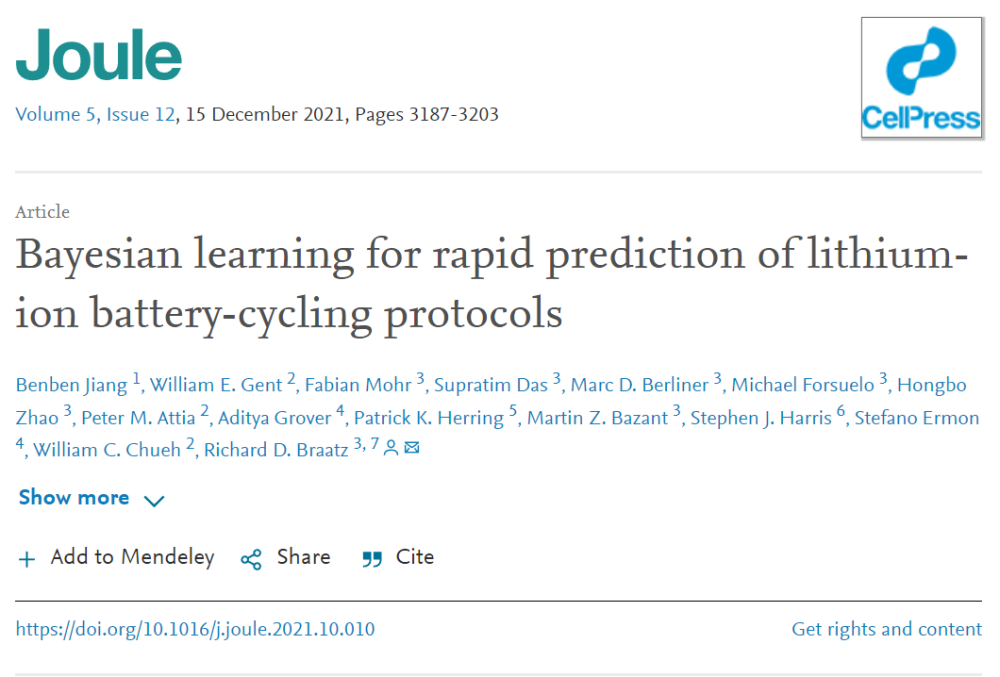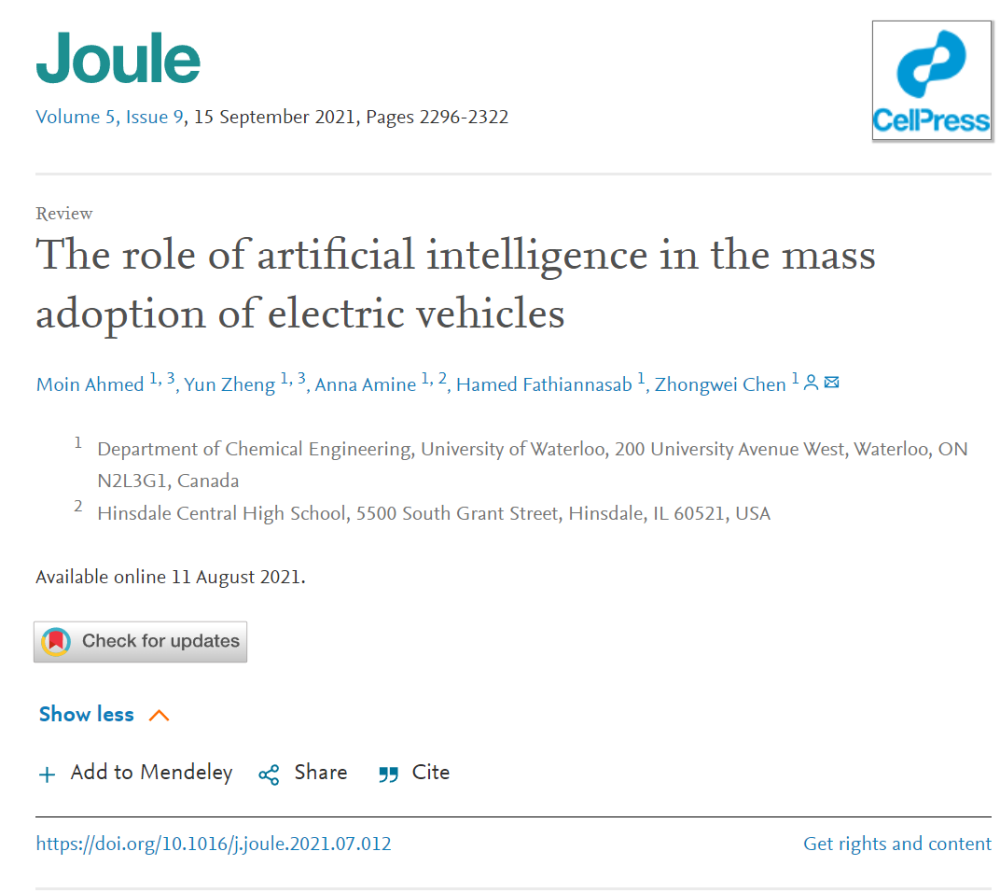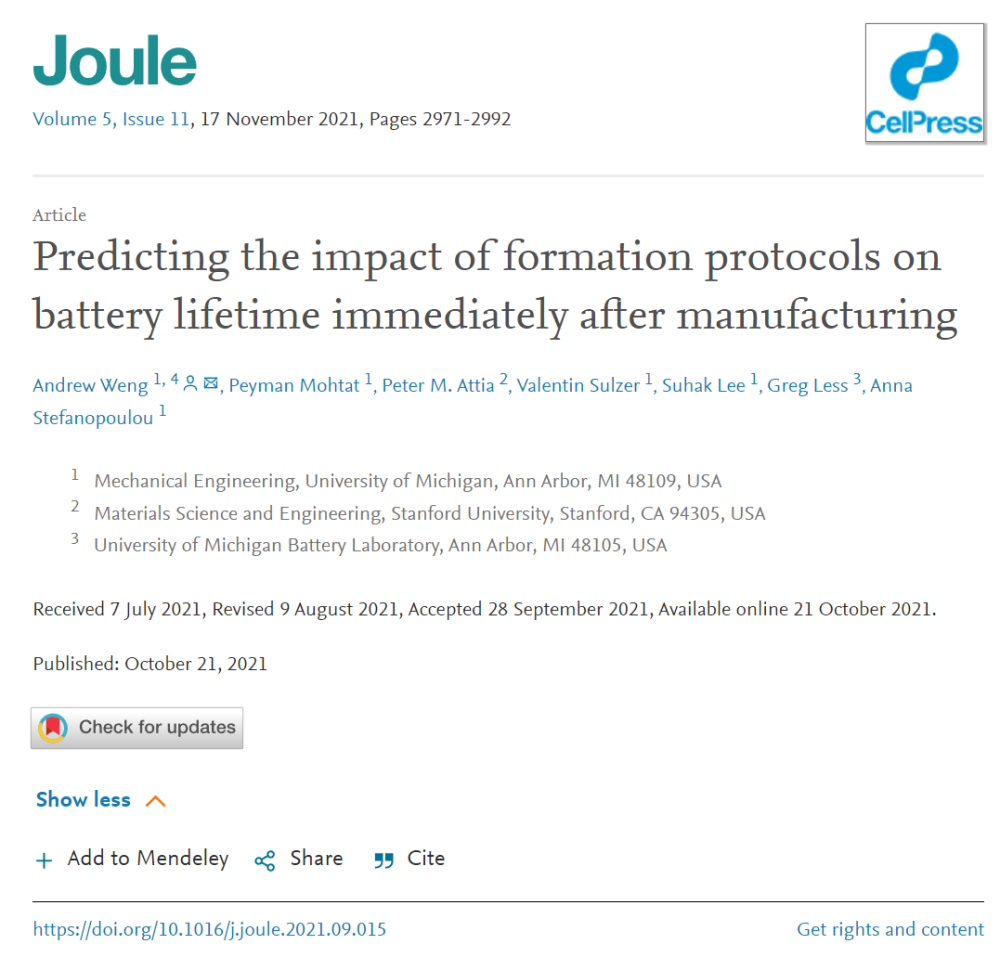The role of AI technology in battery management systems for battery performance

 Back
Back
2023/03/24 11:08:46
The function of battery management system to the battery is like the brain to the human. A good battery management system will judge the power, battery safety and even coordinate the battery pack in advance to improve its working efficiency and life. However, battery management is a complex function of high-dimensional nonlinear space, which may be better solved by introducing AI. We find that joule has published four papers (two research papers, one opinion, and one review) on AI combined with BMS in the past six months
First came this opinion article by DavidA.Howey: Prediction from field battery data! At present, most of the data simulated and predicted in the literature are generated by constant temperature, or even constant current, and the model given is effective based on this point. If the prediction is separated from constant temperature and constant current, the error will be very large, especially when users are in different environments and have different habits, the prediction will be wrong. For this reason, the author puts forward the field prediction of battery performance and analyzes the advantages and disadvantages of physical model and data-driven battery life prediction. The author believes that the data-driven battery life prediction combined with physical model is more conducive to real-time field prediction. In addition, the author expounds the problems existing in the secondary utilization of batteries.
Canadian academician Chen Zhongwei published a review on the role of artificial intelligence in the large-scale use of electric vehicles. The author believes that AI can be applied in electric vehicle power management, charging stations and even smart grids. (1) Optimize battery materials and design to reduce battery production costs; (2) Accurate mileage prediction by driving state can eliminate consumers' mileage anxiety; (3) Using artificial intelligence in EV assistance systems to improve energy utilization; (4) Cloud + automatic driving to improve traffic operation capability and safety; (5) Optimization of charging station location and energy dispatching......
The author discussed in detail from the generation link (screening and optimization of battery materials), use management link (battery BMS and optimization of battery output and electric drive system according to site conditions) and service link (site selection of charging station and power grid scheduling).
To sum up, battery life prediction plays a very important role in battery development, especially for some new battery systems and new charging and discharging protocols. Accurate assessment of battery status and life is of great significance for consumers' purchase intention, battery factory after-sales support and recycling management. However, actual battery life testing is a time-consuming and costly problem, which is not only affected by the uniformity of the battery manufacturing process (that is, the difference between the same batch of batteries and the difference between different batches of batteries), but also affected by consumer usage (different consumers and consumers in different regions have significant differences in battery usage habits). This requires a large number of long cycle evaluations of batteries in order to determine battery performance and life estimates. This high cost and time consuming process seriously restricts the development of batteries, especially the commercialization of new battery systems such as silicon negative electrode and lithium rich positive electrode. Here are two articles that combine data-driven battery life predictions.
AndrewWeng et al. used resistance RLS of low SOC state to predict life. The authors explained the reliability of selecting this parameter from the data and physical level: There is a correlation with life (-0.84). From a physical point of view, low SOC indicates the battery performance of discharge state. For positive electrode such as NMC, the lithium loss corresponds to the positive content of discharge state, the more lithium SEI loss on the negative side, the less it comes back. Finally, the authors also emphasize that the results may not be credible when the positive electrode is not a major source of lithium.
Unlike the former, MIT's RichardD.Braatz group achieved this by combining early lifetime prediction with hierarchical Bayesian models (HBMS) to quickly predict performance (lifetime distribution) without the need for a large number of repeated tests. The method was applied to a comprehensive data set of LiFePO4/ Graphite that included 29 different fast charge protocols. The hierarchical Bayesian model alone provides high performance in predicting protocol lifetime: the overall test average error rate is 6.5% when using a battery cycle to failure. By combining the hierarchical Bayesian model with the battery life prediction model, the test error of 8.8% was obtained after only 3 weeks of cyclic test data. In addition, the applicability of HBM method in NMC/ graphite cells was also demonstrated.
In conclusion, as electric vehicles are about to be widely used today, how to correctly predict battery status and eliminate consumers' range anxiety and safety concerns is the focus of electric vehicle development. Perhaps AI can help. Source: Energy Journal












 Previous
Previous



